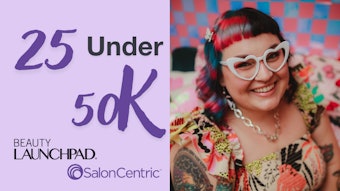
And then one day, I did. I fixed that hair and with that I learned a lot.
I did hair I didn’t want to do, I tried to meet expectations that were unrealistic. I thought to myself, “They are a paying client and I am their stylist; I can do this.” I dealt with frustrated clients who had been to every salon in town looking for the right hairstyle, claiming no one could do it right (red flag!). I thought I could give them what they wanted. I would try the impossible, confident I could make previously bleached out, destroyed hair look like luscious Victoria Secret hair. I would try to fix that previously cut pixie to look like a bob. I would try to fix client’s problems by fixing their hair, hoping I could make them “happy”. All the while, I was not happy, or loving my work. I was feeling bad about my skills as a hairstylist, and was stuck styling clients, who frankly, I never wanted to see again! I was building a clientele that was crushing my dreams of being a hairstylist. As time went on, I realized these types of clients had a deeper frustration than their cut or color.
If you think about it, we’re in the business of taking care of clients and giving them the hair of their dreams. We are not in the business of doing hair that we do not like or that isn’t flattering for a client or their lifestyle. As stylists, we must use the knowledge we have to trust our own skills and talent.
How does this shared trust start? By listening.
In fact, listening is the most essential part of a hair consultation. When a client presents a picture of what they want, I often start by asking, “What is it about this picture that you like?” Is it edgy, romantic, sexy? If a client shows you a photo of a short haircut, but you also hear them mention that they aren’t really wanting to go “that short,” it might not be the haircut they’re looking for. Instead, it might be the feeling they get from that picture. Listen first and then trust that you can give them that feeling in a style that works for them.
If your client is asking for something that doesn’t fit their lifestyle, face shape or hair type, be prepared to offer an option that includes their vision, but with a better fit for them. Make suggestions that point them to a hairstyle that would complement them better. And steer clear of doing hair just because your client wants you to—you’re their style consultant and they deserve your professional advice!
Something that’s often helpful to say when presented with a color request that you believe would not be the best choice is: “I can see that you really like these colors—what if we placed them in a way that would require less maintenance and would be flattering for your face shape? Would you be interested in that?” For example, if a client comes to you with a picture of black hair and red roots, you could try making a suggestion that gives her the same colors, but with better placement. Remember that the hair you do is like your artwork—you want to be proud to put your name on it! You can suggest, “Naturally we see lighter colors toward the ends of hair and deeper colors at the root area. How about we put the black at the roots so it’s less maintenance, and place the red through your ends?”
And don’t forget that you always have the option of saying, “I might not be the best stylist for you.” Yes, it’s true—this one takes some guts, but it is completely worth it if that is your instinct as a stylist. Part of building a business is to have the type of clients you love to work with—and vice versa. If you don’t feel like this is a client who you can satisfy, it is fair to let the client know that you don’t feel comfortable doing the hair they’re requesting, and you don’t want to waste their time or money. As an option, try recommending another stylist that would be a better fit, or a neighboring salon that is more their style. Never compromise your gut feeling to attempt to please a client.
Last tip in doing the hair you love is to be a walking model of the styles you like to create. Post photos online of your best work and show the world the styles you are strongest at! Give away your business cards with social handles to potential clients whose hair you would love to do. When I see someone who I would love to have as a client, I offer up a compliment: “I love your hair! I’m a hairstylist and love doing hair just like yours. If you ever need anything, I would love to take care of you.”
The moral of the story is: just because we are licensed to do hair, doesn’t mean we should do everyone’s hair. If you want to have a long happy career, lean into your own unique style and passion that compelled you to choose hairdressing as your life’s profession—and get out there and do the hair you love to do!
Peace, Hair & Love,
Anna Peters
(Sam Villa ArTeam Member)











